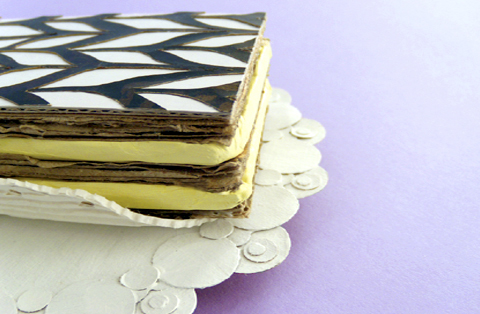The Beautiful Napoleon
What a wonderful pastry! Traditionally made with alternating layers of puff pastry (mille-feuille) and pastry cream, then decorated with a shiny poured fondant and chocolate drizzle pattern of varying designs, it is elegant, delicious, and graphically beautiful.
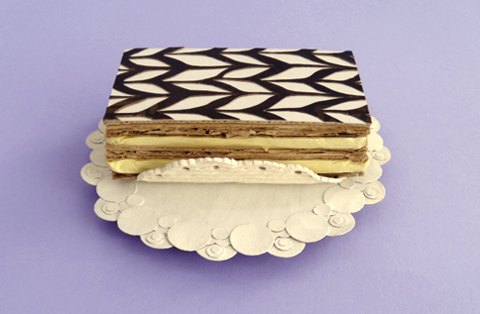
I read through many online recipes, as well as my stand by Pastry book: The Pie and Pastry Bible by Rose Levy Beranbaum, to gather the construction details I needed to create this quintessential pastry in The Cardboard Kitchen. I also looked through hundreds of photo’s from my talented Flickr friends. I used my Flickr friend Jen’s Photography food set as the resource for my primary image reference. Her Chocolate Napoleon not only gave me the graphic line quality I was looking for, it is also up close and personal luscious!
I had to ‘shop’ for four key ingredients: puff pastry; pastry cream and white poured fondant. Fortunately I had a small amount of chocolate glaze in The Cardboard Kitchen pantry from another baking project.
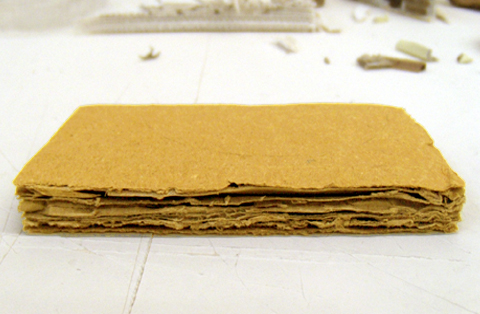
I began with my hunt for the pastry, and found the perfect mille-feuille in a furniture store recyling bin. I think you will agree that, although it may not have “a thousand leaves”, after a little kneading and folding, it looks like flaky layers of puff pastry!
The most difficult ingredient to find was the pastry cream. It had to be the perfect color and just the right texture to create the slight ooze between the layers of mille-feuille.
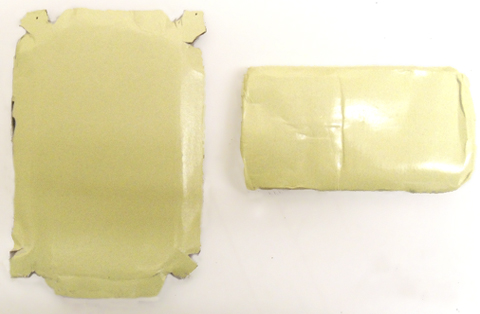
The shiny poured fondant was created from a shipping box which once held wire shelving. The ink used to print on the background layer of this box provided just the right sheen.
The traditional chevron pattern is created by piping the chocolate glaze onto the white glaze and pulling it through before the glazes are set up. Using this technique, the piped chocolate appears to be raised ever so slightly above the shiny poured fondant. In art we call this a bas-relief!
Of course there is no way to pull chocolate cardboard through white cardboard fondant, so to achieve this bas-relief feel, I inlaid it. No need to mention how many times I had to do this over to achieve the perfect glazed top, let me just say YIKES….
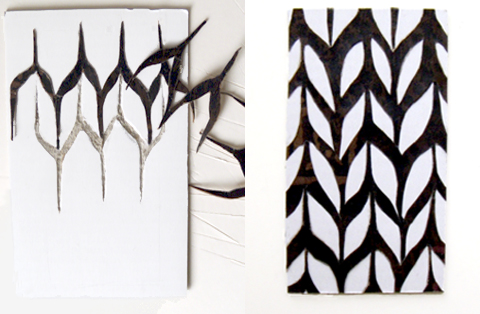
The pièce de résistance was my find of a discarded and torn section of architectural board: the type used by architects to make their fantastic models. It made the perfect pastry wrapper to prevent sticky fingers.
Although you can’t eat it, I think you’ll agree the Napoleon baked in The Cardboard Kitchen is visually delicious!
